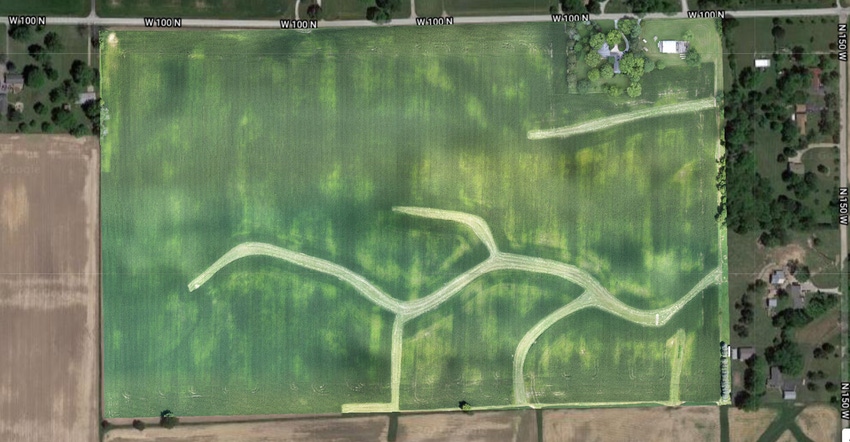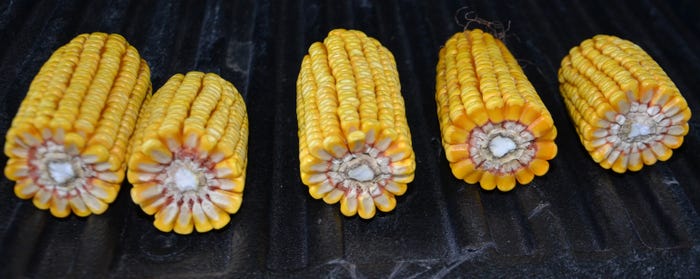
The work that went into figuring yield estimates for Factor in weaker spots when estimating yield, which was the Corn Watch article in the October issues of Farm Progress magazines, happened in early August. Timing is important because Mother Nature dealt a couple more cards afterward that made a challenging season even tougher.
First, although soils were saturated in mid-July, they soon dried out. And they stayed dry until late August. That extended dry period during the heart of grain fill affected how kernels finished the season.
Related: When applying nitrogen late helps corn most
“We split ears in half in September, and although there was good kernel depth, the kernels weren’t as plump as usual,” says Dave Nanda, director of genetics for Seed Genetics Direct, sponsor of Corn Watch. “In mid-July and even early August, it looked like it might be an exceptional corn year. But the grain fill period was too dry in many areas, and that affected kernel size.”
Second, once rains returned in late August and September, and it stayed warm, diseases picked up steam. The Corn Watch ’21 field was sprayed with a fungicide after tasseling, and that held gray leaf spot in check for a while. However, by late September, leaf samples from plants that still had some green tissue were sent to the Purdue University Plant and Pest Diagnostic Lab. Specialists confirmed four foliar diseases: gray leaf spot, tar spot, southern rust and anthracnose.
Yield: Estimates vs. final
This field consists of three soil types and is not pattern-tiled. Anhydrous ammonia was applied before planting. The lighter, somewhat poorly drained soils were saturated for extended periods during the first half of summer. Specialists suggest some nitrogen denitrified and escaped into the air as nitrogen gas. Obvious signs of nitrogen deficiency were evident in these spots before tasseling.
Relying on an aerial image of the field taken by a drone in late July, a rough estimate of the percentage of the field affected was developed for the October article. Yield in the hardest hit spots was estimated at 140 bushels per acre, based on plant and ear counts. Yield for the best part of the field was estimated at 255 bushels per acre. That led to a whole-field estimate of 225 bushels per acre.

After the dry spell extended much longer than expected, and once diseases set in late, Nanda lowered his expectations to 190 to 200 bushels per acre. Ears were harvested on 1/1,000 of an acre per row on two rows where corn was good, and two rows where it was affected by nitrogen deficiency. Those ears were weighed, yielding 215 and 214 bushels per acre on the better spots and 110 and 135 bushels per acre on the poorer spots. All were below earlier estimates.
Once the combine ran, the yield verified across the scales was 207 bushels per acre. That’s 92% of the yield estimated in early August. That estimate was just 8% too high. It was in the ballpark, but a tough end to a challenging year kept yield from reaching the mark, Nanda concludes.
About the Author(s)
You May Also Like




